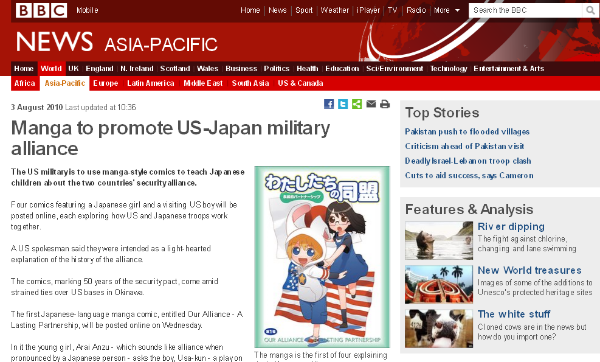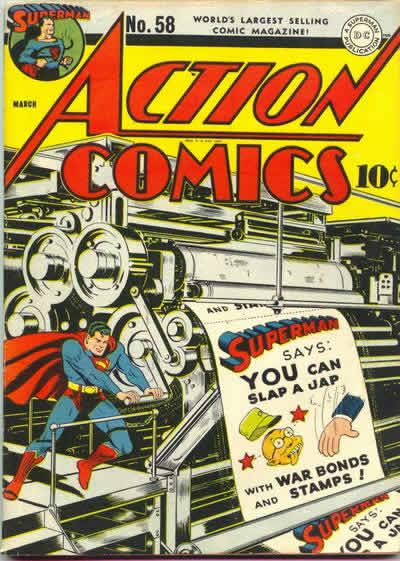Today, the BBC Asia-Pacific website features an article about “manga-style comics” published by the US military “to teach Japanese children about the two countries’ security alliance”.

As a conscientious objector, I cannot help but find the all thing disturbing. Especially because I’m sure the Japanese public has not yet digested this other fine example of American comics, pre-dating the US/Japan Treaty of Mutual Cooperation and Security:

In recent years, there’s been a lot of talk about the role of computer-based wargaming in shaping a military-entertainment complex. Indeed, as Tim Lenoir and Henry Lowood, pointed out:
“The U.S. Department of Defense (DoD) has been the primary proponent of war game design since the 1950s. […] By the 1980s, the seeds of a deeper collaboration among military, commercial designers, the entertainment industry, and academic researchers in the development of high-end computer simulations for military training had been planted.”
[Tim Lenoir and Henry Lowood (2003) Theaters of War: The Military-Entertainment Complex, in J. Lazardzig, H. Schramm, L. Schwarte. (eds.) Kunstkammer, Laboratorium, Bühne–Schauplätze des Wissens im 17. Jahrhundert, Berlin: Walter de Gruyter Publishers, pp. 432]
I guess what I’m trying to say here is that war propaganda is so pervasive that the military don’t even try to update it. Why invest in video games and 3D computer simulations, like they used to do in the 1990s? The US have always been pretty straightforward about war propaganda and the use of comics – cheap, popular and effective media. Around the time the “Slap a Jap” Superman cover was issued, Ralph D. Casey (then Professor at the School of Journalism of the University of Minnesota) penned What is Propaganda? (1944). “No matter how we define it”, he stated in his manual, “the principal point on propaganda is this: Don’t be afraid of it.” And, to better make his point, he chose a reassuring Donald Duck as the cover image…
